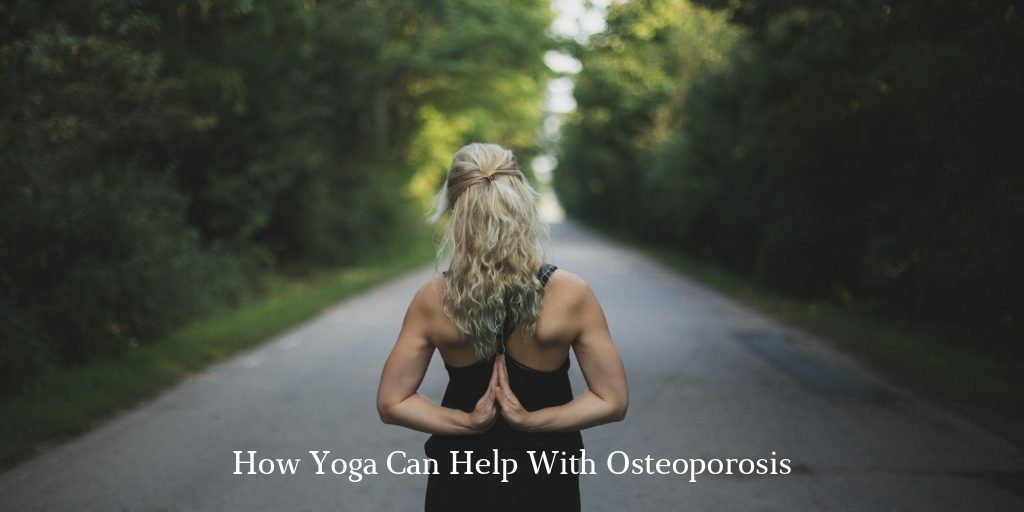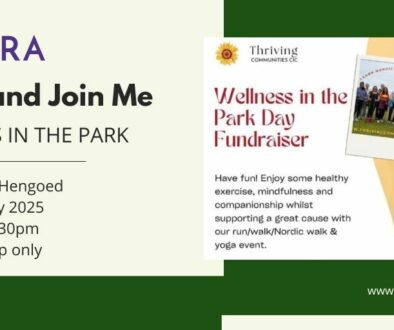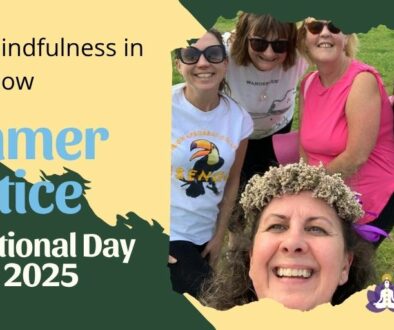How Yoga Can Help With Osteoporosis
I’ve been teaching yoga for decades and have seen an increase in the number of students with a diagnosis of Osteoporosis or Osteopina. It is estimated that there are 3 million sufferers in the United Kingdom alone.
What is Osteoporosis?
“Osteoporosis is when bones lose their strength and are more likely to break, usually following a minor bump or fall. These broken bones are most common in the wrists, hips and spine. Osteoporosis itself isn’t painful, but the broken bones it causes can lead to the pain associated with the condition. Spinal fractures can also cause loss of height, curvature of the spine and long term pain.” According to the National Osteoporosis Society [www.nos.org.uk]
In 2008 The World Health Organisation identified osteoporosis as second only to cardiovascular disease as a leading health-care problem. I believe it is possible for bone-mass loss to be halted and even reversed in many cases. A bold statement indeed – but this is based on my personal experience, that of many people I’ve met, and continue to meet, with a diagnosis of Osteoporosis or Osteopenia.
What is Osteopenia?
“Osteopenia is where the bone density or bone mass is lower than ‘normal’ but not enough to diagnose Osteoporosis.” [According to Dr Tom Smith’s book ‘Osteoporosis: Prevent & Treat’]
Osteoporosis is of particular interest to me as I’m considered ‘At Risk’ due to a family history of osteoporosis, a below average body mass index for 30 years, a diagnosis of inflammatory bowel disease and past use of prescribed medication that may have increased my susceptibility to the condition. There’s a quiz you can take on The National Osteoporosis website to assess your risk of the Osteoporosis, plus so much information, advice and support – www.nos.org.uk
When I was 40 years of age I paid for a densitometry x-ray, known as a DEXA scan, to assess my bone mineral mass as I was considered ‘at risk’ of the condition. The result – my bones were compared to that of a 68 year old, way below ‘normal’ for my age. This was quite a shock but I did my research, saw a nutritionist adjusted my diet, took-up dancing, skipping, continued my yoga practice and yoga teaching, received homoeopathic constitutional treatment, along with taking carefully selected tissue salts, continuing to enjoy life to the full!
A decade later I had another DEXA scan, on a different machine that resulted in a ‘Normal’ Bone Density reading. I was overjoyed and believe the lifestyle changes I made served me well, along with the fact that the first scan was taken when I was still breastfeeding.
My yoga teacher training was with the British Wheel of Yoga and their Safety Guidelines for teaching yoga postures is comprehensive, but I know many yoga teachers and students who are concerned about what can be practiced safely and what should be avoided. All students joining my class are asked to notify me of anything that may impede their yoga practice, therefore enabling me to carry out a risk assessment if necessary.
“People with osteoporosis are more likely to break a bone after a simple fall, lifting a heavy object or moving in a way that twists the spine. A simple fall could be defined as falling from a height of less than one metre.” [www.nos.org.uk]
What asana (yoga postures) can be practiced safely depends very much on the individual, but they must be aware and cautious, stopping or modifying as their needs dictate, along with their yoga teacher’s guidance through a ‘mindful’, beneficial and safe, yoga practice.
In my experience I always encourage each individual yoga student to approach every technique in yoga with awareness, observing – What, When, Where, Why, How they feel/experience every posture and modify accordingly or avoid. This principle, known as Svadhyaya (Self Study), is part of Patanjali’s (an ancient yogic sage) Yoga Sutras, 196 aphorisms forming a systematic approach to the practice of yoga and enlightenment.
I always provide clear, concise instruction, outlining any precautions, modifications and prohibitions. This is based on personal experience, years of teaching thousands of individuals of all ages, with various medical conditions, injuries, limitations or hyper-flexibility, etc., plus the British Wheel of Yoga Safety Guidelines and always observing, researching, learning, intuition, gleaning so much knowledge along the way.
Several of my students with a diagnosis of Osteoporosis, have kindly given permission for me to share the following stories with you. I find these women so inspiring and their personal accounts provide useful information, strategies and hope for those living with the condition:
On diagnosis of Osteoporosis my Consultant advised me I could break a bone just by sneezing so encouraged me to continue exercising, practicing yoga, along with taking my prescribed medication, healthy diet and lifestyle!”
I had an early menopause at 38 but didn’t know about osteoporosis then. It was only when I was suffering with hip pain problems that a scan revealed osteoporosis when I was 55. I was prescribed Hormone Replacement Therapy (HRT) in 2000 for 5 years and Alendronic Acid for 8 years. My mother probably had Osteoporosis too as she had an early menopause and a hip replacement at 60. I take calcium supplements daily, follow a nutritious diet, practice yoga, line dancing, musical movement and walking. This combination has resulted in my condition improving to a diagnosis of Osteopenia.”
I will be 71 next month and I think exercise is so important to combating Osteoporosis! In addition to my yoga practice I try to walk everyday and do at least 10,000 steps daily, I find my ‘fit-bit’ encourages me to do it. I also have a healthy diet and take a Vitamin D tablet each morning. Last year I had an ‘infusion’. I had my results last week and am thrilled to say my bone density has increased. I don’t need to see my consultant for 2 years, when I will have another scan to monitor my progress.”
I was prescribed HRT after a surgical induced early menopause. I developed a blood clot and had to stop taking HRT to later be diagnosed with Osteoporosis. I tried a variety of prescribed treatments, did my research and started walking, zumba, yoga, following a good nutrient packed diet, healthy lifestyle and zest for life. I’m 70 years young next birthday and feel better than ever!”
I believe Osteoporosis can be prevented and treated but each individual’s effort and involvement is crucial to tailor a plan suited to them. I highly recommend Dr Tom Smith’s book “Osteoporosis: Prevent and Treat” and for women worried about the Menopause and the possible onset of Osteoporosis “Passage to Power – Natural Menopause Revolution” by the late Leslie Kenton and “Women’s Bodies, Women’s Wisdom” – Dr Christiane Northrup.
In the meantime, a good treatment and prevention programme for osteoporosis should include:
Regular physical exercise, especially weight-bearing movements, e.g. walking, jogging, running, dancing, yoga, etc.
Perhaps increase your intake of Calcium Phosphate, Magnesium, Vitamin D, Vitamin C, Beta-carotene, Zinc rich foods (I always encourage nutrition as the best source of vitamins and minerals as the body absorbs and assimilates food sources easier).
- Sunlight provides us with valuable Vitamin D too.
- Stop or limit your intake of carbonated drinks, especially ‘soft-drinks’ as these hinder the way calcium is used in the body.
- Reduce or give up smoking.
- Reduce or stop alcohol intake.
- Check with your healthcare practitioner if you suffer from a medical condition, and or take medication, that may be thought to increase your susceptibility to bone density loss.
- Perhaps book a consultation with a professional Homoeopath.
I’m very much a ‘Glass half full’ kind of girl so I’d like to finish with this quote:








